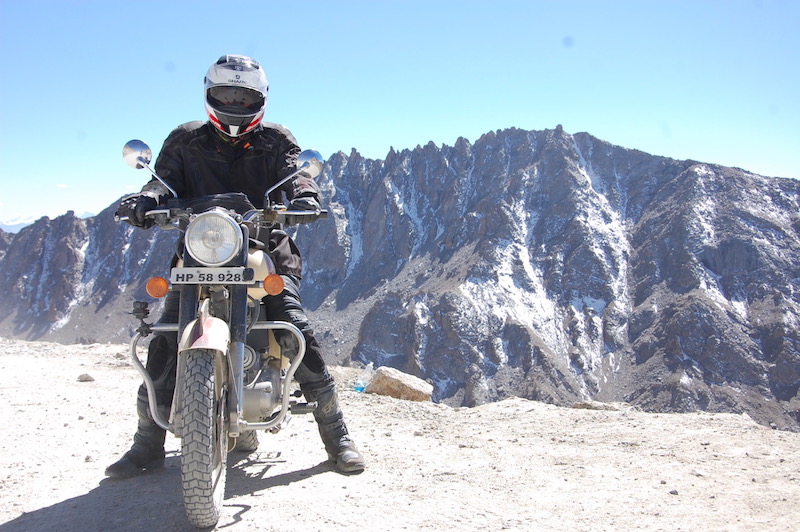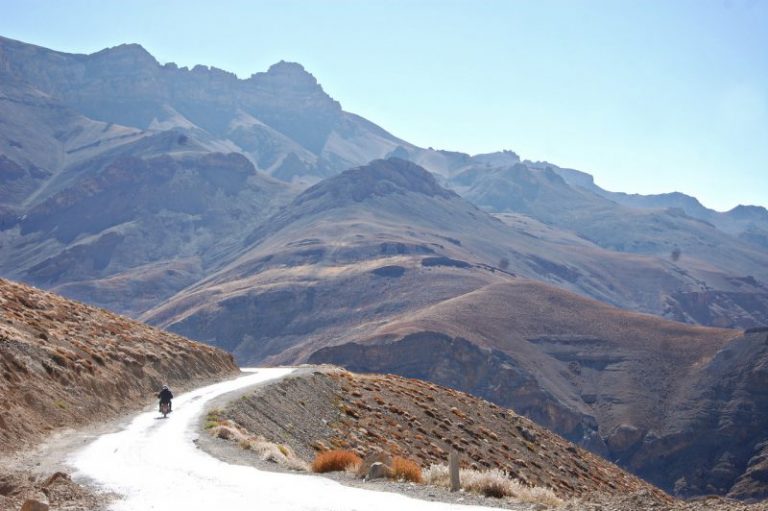Sometimes you just have to pinch yourself. I’m stood at the side of the highest road on Earth, having ridden here on a bike that looks like it has been largely untouched since the 1950s. I’ve made this trip with a bunch of guys who, two weeks ago, I had never met and with whom I now feel a bond of shared achievement that’s hard to explain. We’ve travelled nearly 1,000 miles on some of the most beautiful, dangerous, stunning, difficult and truly epic roads that I could have imagined. We’ve fought our way up mountain roads in sub-zero conditions, ridden through remote villages, crossed vast glacial plains and raced through deep river valleys. We’ve shared our breakfast with wild horses, taken selfies with yaks and ridden camels across windswept sand dunes. This has been the most incredible two weeks I have ever experienced and, for a moment, I’m totally overwhelmed. This is what adventures are made of.
So, let’s rewind to how all these things came about. I’ve spent my life riding road bikes, dirt bikes and just about anything with two wheels and an engine. Aside from a week-long trip to the Pyrenees with my buddies in the local TRF, and a dirt biking trip to Morocco back in 2008, epic motorcycle journeys had not featured in my bucket list. But all of that was about to change. I’d read about the trips to ride Royal Enfields in the Himalayas and thought that this would tick all the boxes. I’d never been, or even considered, travelling to India, I’d never ridden a Royal Enfield and I’d certainly never ridden every day for two weeks on challenging and totally unknown terrain. In terms of my comfort zone, I was so outside it I couldn’t even see it any more.
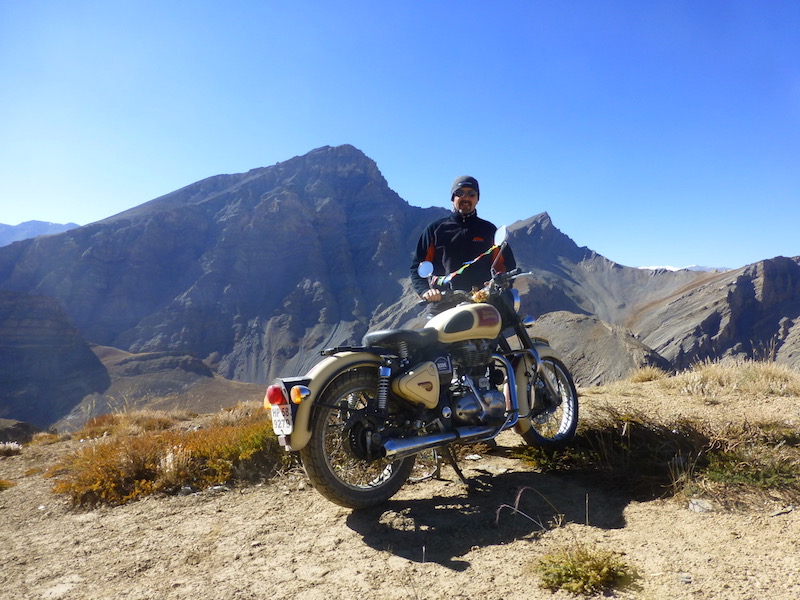
Four months later and I’m wheeling my kit bag through Indira Gandhi Airport on the outskirts of Delhi. I’m met by Anna from Ride Expeditions who helps me load my luggage into a cab, requesting that the driver puts it inside the car rather than unsecured on the roof rack.
Once we hit the mid-morning traffic, I’m instantly wondering whether this was a good idea at all. As seven lines of traffic battle their way down the four lane highway accompanied by a supporting cast of scooters, cycles, rickshaws, tuktuks and the occasional cow, the prospect of riding a bike on these roads suddenly seems very, very unwise.
Heading North
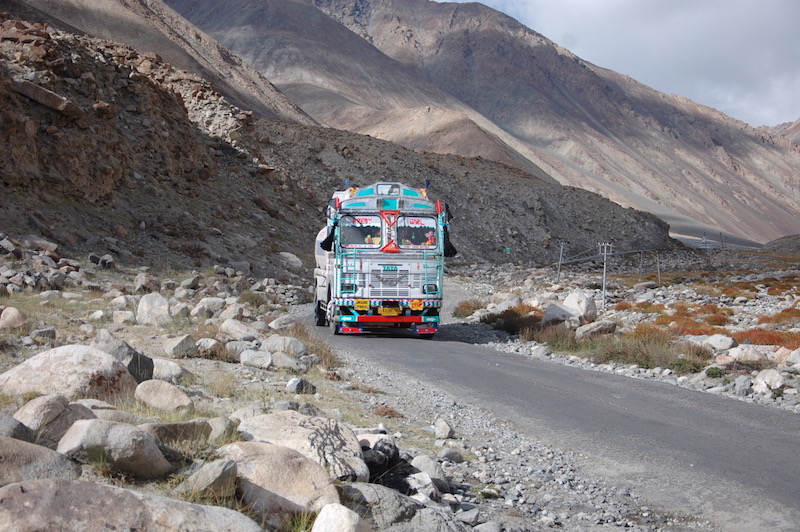
With the set-off point for our trip twelve hours north at Manali, we make the journey in air-conditioned cabs to avoid a painful three-day long ride. The Aussies are suffering having only left the local nightclub some two hours before our five-AM start time.
By evening, we’ve travelled through some stunning scenery and witnessed some of the scariest overtaking manoeuvres ever attempted outside Formula 1. The roads are tight and busy and it’s the only way to make progress, but at times I consider whether my will is up to date. Arriving at the plush, five star hotel at around six in the evening, all this is forgotten and after unpacking it’s beer and curry, the meal that will become our staple diet.
Day one dawns and after breakfast the rumble of engines announced the arrival of the bikes. Eight identical boxfresh Royal Enfield 500 Classics are lined up outside the hotel reception. We quickly kit up, choose a bike and set out following our local guide, who rides like Michael Dunlop but is as calm as the Dalai Lama. With Toby, the Ride Expeditions owner and medic, and sweeper rider Topi bringing up the rear, and the support truck and tour doctor in his 4×4 falling into line, we spend the day accustoming ourselves to the bikes and the unique traffic and roads around Manali, which seem to flip between some bizarre and dangerous video game, and then the best roads in the world. The bikes are certainly different with their relatively steep steering angle, forward set pegs and lazy power delivery. The fuel injection might be 2016, but the ride is still 1956, yet the Enfields are everywhere. KTM can only dream of such market domination, there are literally no other brands on the road.
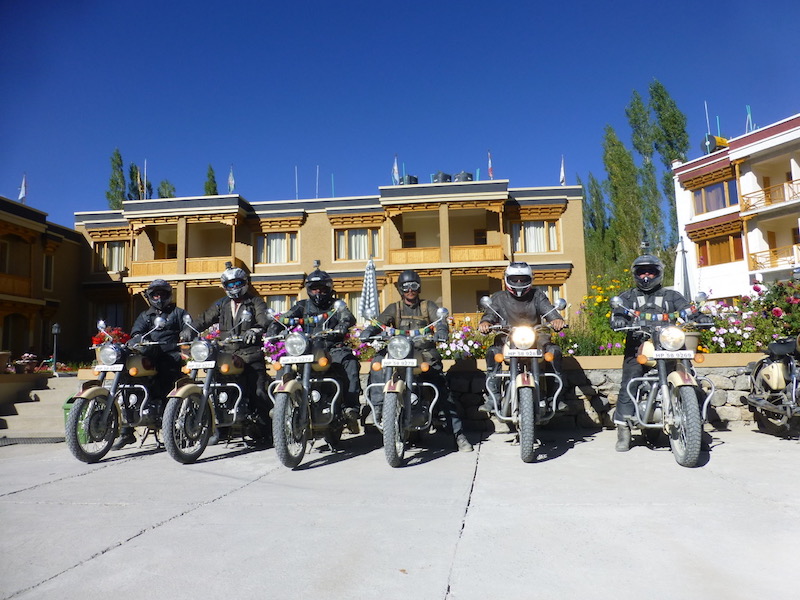
The following morning some of the guys wanted to try paragliding, but with two weeks riding ahead of me, I decide against rolling the dice on a broken ankle on day two. Once the aerial contingent is back to earth we set off north to the vast Rohtang Pass, one of the main arterial routes that allow access north. The ride up is stunning as we snake through forests and hairpins on the way to the summit, our progress only interrupted by one of the many seemingly pointless checkpoints. The Ride Expeditions team have sorted all the paperwork, but it would be easy for solo travellers to be caught out by these baffling bureaucratic hoops that have to be jumped through.
After lunching just before the summit, the ride down the other side of the pass suddenly gets serious. Gone are the maintained surfaces, to be replaced with a network of good tarmac, terrible tarmac, sand sections and full on rock sections that would not look out of place in the Dakar. And all this could be within 100 yards! Factor in the enormous numbers of hairpin bends, blind corners and an extraordinary number of enormous and overloaded lorries and the occasional convoy of 20 or more army trucks and this is adventure motorcycling Indian style. You know those videos where you see a rider meet a truck on a single track with a rock face one side and a 200ft drop on the other – that’s happening right in front of us – and it’s bowel looseningly worrying, yet deliciously life affirming. The bikes are handling the terrain surprisingly well, even if standing on the pegs is made difficult by the forward set position and wide tank. We swap the lead on numerous occasions, as different lines prove more or less effective.
High Plains Drifter
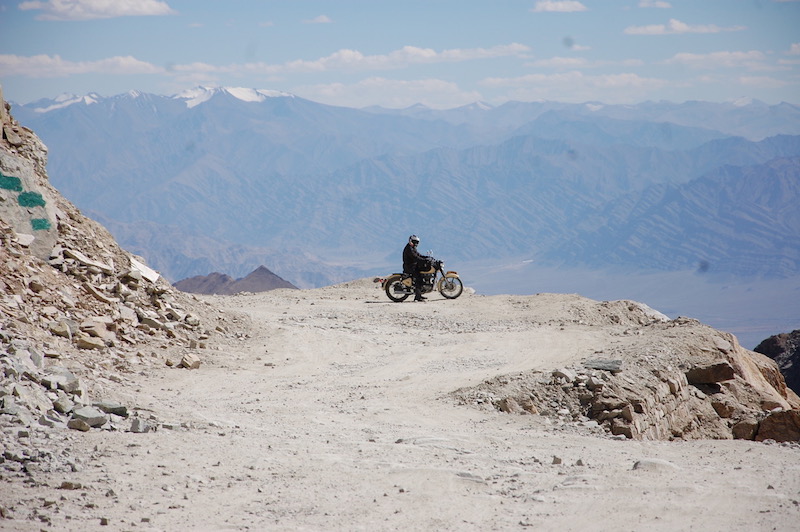
The ride up to Sarchu is just as astounding as the previous day. As the roads get higher, and the temperature drops the greenery disappears, to be replaced with horizon-to-horizon rock as we climb into the Himalayas. Most of us are taking altitude tablets to help us adjust, and those that aren’t are wishing they were. When we stop for lunch, the lack of oxygen is taking its toll, and, faced with a warm tent at the temporary settlement at Darcha, most of us are happy to stop and snooze. By the time we reach camp that evening, we’re knackered and need a few hours to recover before the box of beer becomes our friend again. Suitably fuelled, we mess about with slalom challenges and slow bike races as the locals look on with confused smiles. A hearty meal is followed by a campfire from the wood we’ve bought in the support truck. We’re sat at 4,200m above sea level, sinking beers and chatting to fellow travellers, and it feels like the best place in the world.
After a restless night’s sleep as our bodies struggle with the idea that we are not suffocating, it’s an early start for the 150 mile trek ahead of us. As we leave the vast plane, the army are playing cricket in the morning sun and it suddenly seems very colonial. The signs on the road away from the valley floor warn of 21 hairpins in succession, but as we climb and muscle the Enfields ever upward it seems even more. The concentration is intense as the prospects of a mistake in this landscape involves more pain than any of us are ready for. The Aussies have established that they like to ride at the front and that’s cool, none of us are arguing, just taking in this epic landscape.
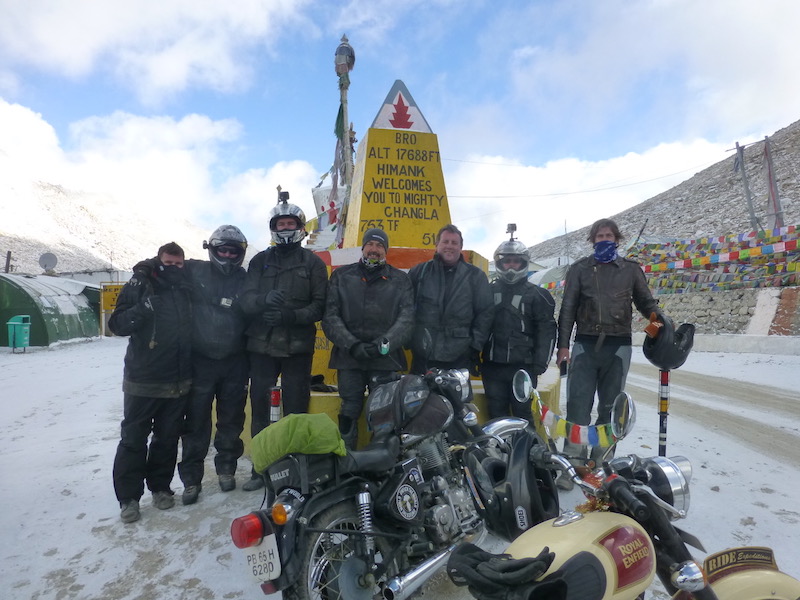
We stop for coffee at Pang, by yet another vast military base, and discuss the crashed truck that we’ve just seen halfway down a mountain pass. Pressing on to lunch at Debring, the road looks deceptively fast and straight, but the drainage channels every 500m or so soon let us know that the 75 mph that the Classics are comfortable with is plenty fast enough. We climb away from the plain to travel through the third highest pass in the world, stopping for the obligatory selfies, before taking on more treacherous roads on the descent.
Loving it in Leh
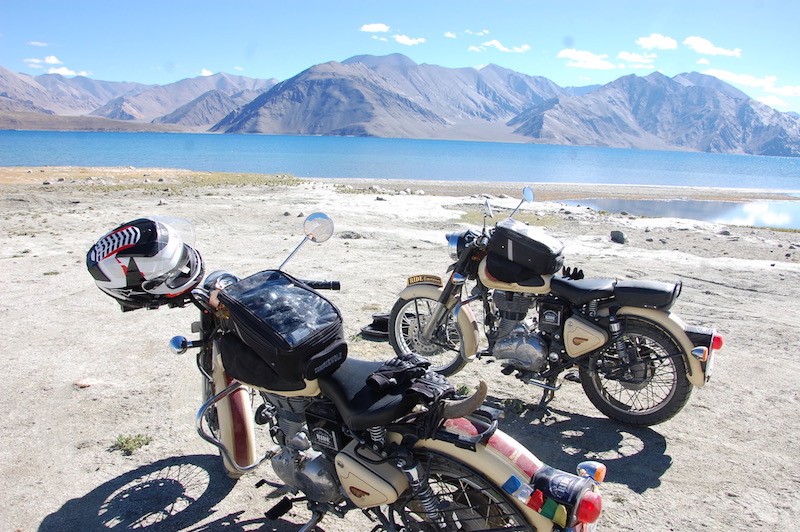
By the end of the day we are safely booked into our hotel in the northern city of Leh. The area feels prosperous, clean and altogether more relaxed than Manali, and we take advantage of the shops and bars in this fascinating place. We have a rest day scheduled so the next morning is taken up with shopping, shaves and, for some, shishas. In the afternoon we break out the jeans and leather jackets on the bikes and visit a couple of awesomely serene and ancient Buddhist monasteries, before blatting down the streets like we are in a 50s biker movie – “What are you rebelling against? What have you got?”
With one more day of local riding to the Lamayuru monastery 80 miles west, the next stage of our tour involves a stupidly early start due to the internal politics between bike hire companies in Leh and Manali. The compromise leaves us with one option of leaving the city at five in the morning, taking on the local roads at first light. The combination of potholes, piles of building rubble, stray animals and road-dominating trucks mean that sunrise cannot come quick enough as we climb towards the high pass. There’s snow and ice to contend with and we all wish we’d worn more by the time we reach the top. Harley, our antipodean boilermaker and ‘try-everything’ guy is frozen, and the team donate clothing until he can feel his extremities again.
As soon as the snow came, it’s fading again as we ride down to meet the support truck for an alfresco breakfast. The guys are there every time we stop to provide drinks and snacks from chocolate bars to pressed figs and candied ginger, and on this occasion we get to share our meal with a herd of wild horses – this is not your usual package tour. As we press on down the valley, we soon start to catch sight of the vast Pangong Tso lake alongside which we’ll be camping. The lake is the highest saltwater lake in the world, stretching an incredible 80 miles from it’s western shores in India to it’s eastern shores in China. We ride alongside this achingly beautiful stretch of water and rough-hewn tracks before reaching our accommodation, bespoke yurts complete with flush toilets and enormous radiators.
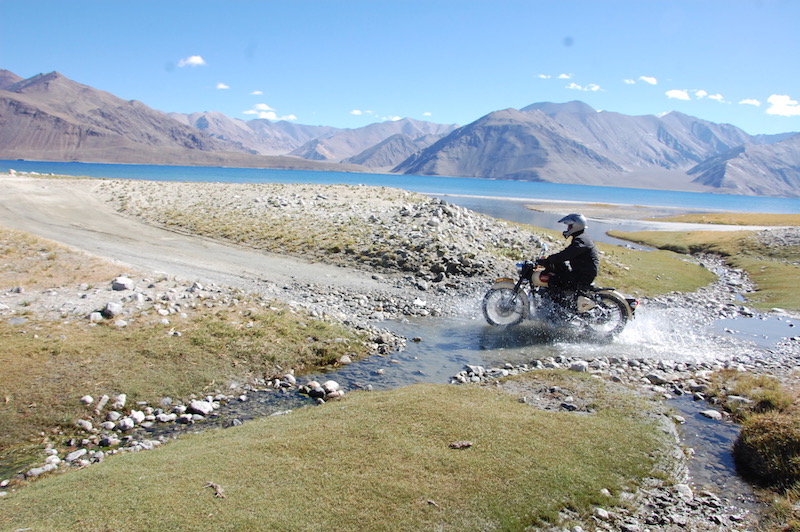
In what was frankly a stupid idea, the rest of the riders persuade me into an early morning swim in the lake before leaving for our last campsite of the tour in distant Hundar. The lake is painfully cold, and the biting wind as we leave the water reduces everything to button mushroom dimensions – I’m not impressed! The ride up to the Hundar Valley is some of the most incredible we’ve encountered with miles of sweeping roads interspersed with hard sand sections across the valley floor. The Enfields are not light and the effort of hustling them through the rally sections of the highway at high altitude leave us exhausted but with a real sense of shared endeavour.
The Last Hurrah
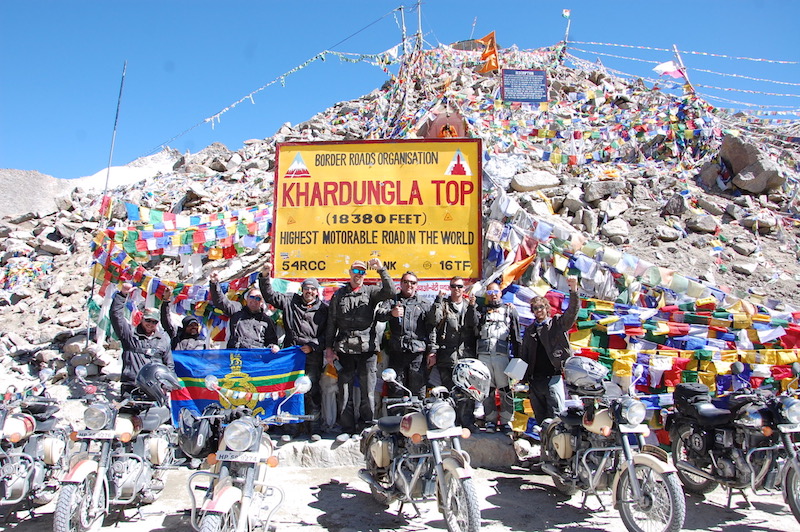
All too soon it’s time to leave Hundar and take on the final challenge of the tour, the Khardung La Pass, the claimed highest motorable road in the world. There’s been a cycling race on the mountain pass for the first part of the morning, so we have to wait for two hours before we hit the road. Thanks to our local fixer, we get the holeshot ahead of the other traffic and flat-track it to the top in a record breaking time despite some appalling roads on the way there. The summit is strangely quiet thanks to the earlier road closure so we get the chance to take in just what we’ve just achieved in the past two weeks as the myriad of prayer flags flutter in the Himalayan wind.
Want to ride this Royal Enfield tour?
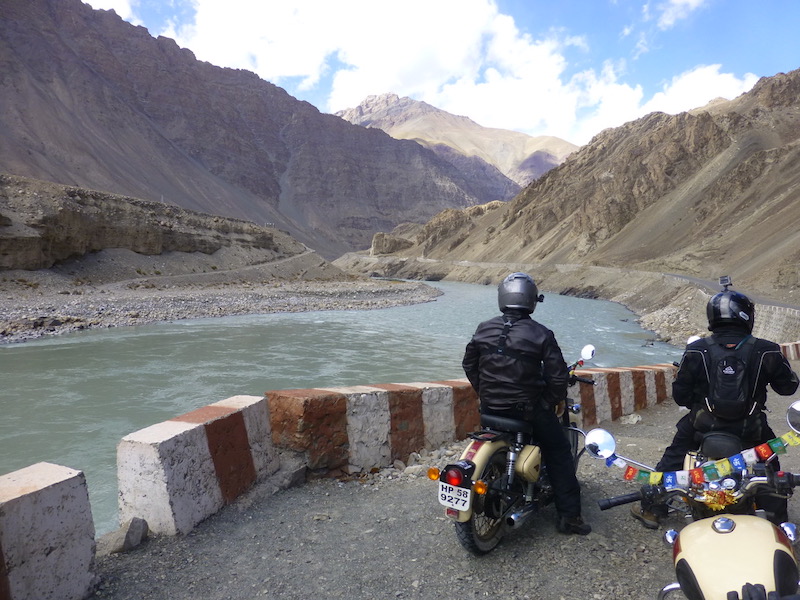
Do it yourself
